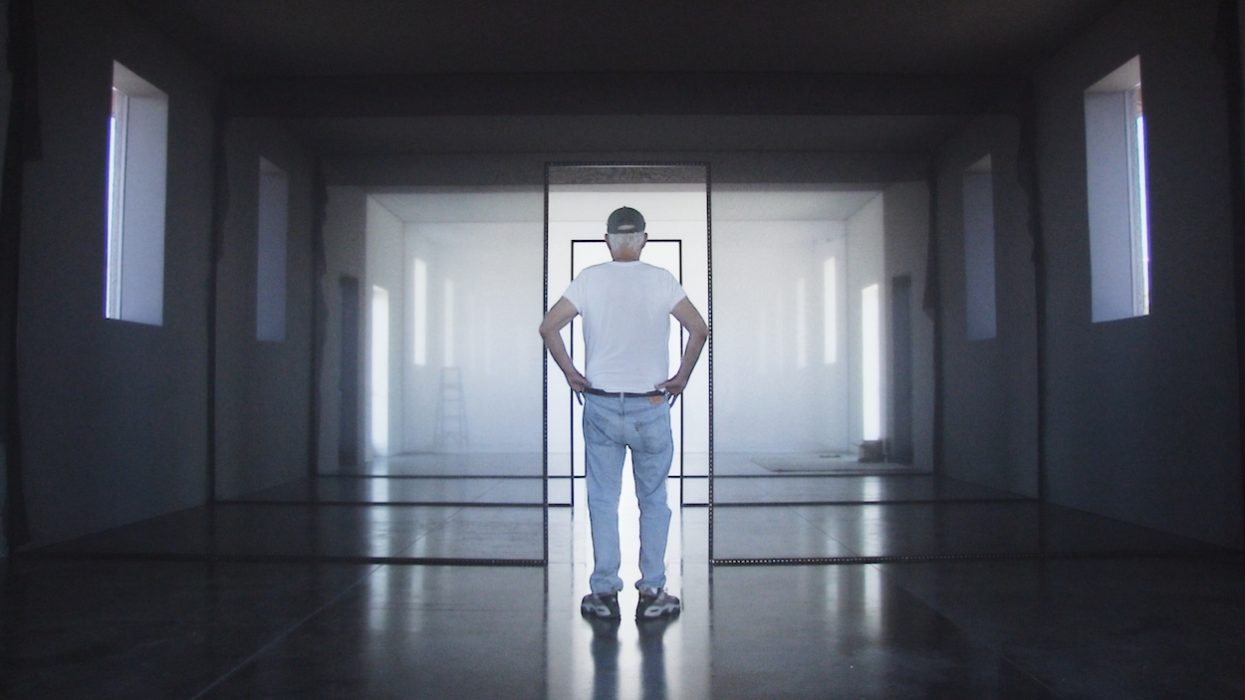Robert Irwin’s origin story is the stuff of legend. A freewheeling teenager raised in Long Beach who was mesmerized by bebop and claimed to never own a notebook in high school; an avid student of art (not art history) whose gambling savvy at the racetrack funded an emergent practice of making pared-down paintings that answered metaphysical questions. He turned his back on the art world during the ‘70s to explore the nature of human perception and artmaking beyond the canvas, returning as a pivotal figure of California’s Light and Space movement and mounting ephemeral works that resisted categorization and, in his words, “catch lightning in a bottle.” They range from bisecting rooms with barely-there scrims and placing acrylic columns that were looked through, radically expanding possibilities of what art can be.
His career is captured in “Robert Irwin: A Desert of Pure Feeling,” a new documentary by director and CineMarfa co-founder Jennifer Lane that debuted at this year’s South by Southwest film festival but is enjoying a wide release tomorrow. The film offers an in-depth look at his unlikely trajectory, fueled mostly by a compulsion to inquire into human perception and see how art can play with it. Considering that Irwin’s works often existed in minimal material terms and he refused to photograph them, capturing their fleeting magic is easier said than done. Archival interviews shot in the ‘70s peek inside his mind; they join a profusion of media showing his major works coming together. Chief among these is priceless footage of him beefing with Richard Meier while the two designed the resplendent Central Garden between the J. Paul Getty Museum and the Getty Research Institute in 1997.
Just as Irwin’s vision proved victorious at the Getty, the film shuts down any skeptics of his steely dedication toward seeing any kind of space and recognizing artwork in it. The narrative builds up to perhaps his crowning achievement, a massive permanent installation that opened at Marfa’s Chinati Foundation in 2016. Taking over a low-slung concrete building on the ruins of a former military hospital, Untitled (Dawn to Dusk) lets light stream in through the U-shaped structure’s perimeter windows to illuminate carefully suspended translucent fabric as the day progresses. Multiple Irwin signatures—Light and Space, yes, but also time—coalesce as the sizzling Texas sun shines in. Irwin worked on it for more than 15 years, finessing fabric placements and making sure things were just right. Even into his nineties, that vision prevails.

